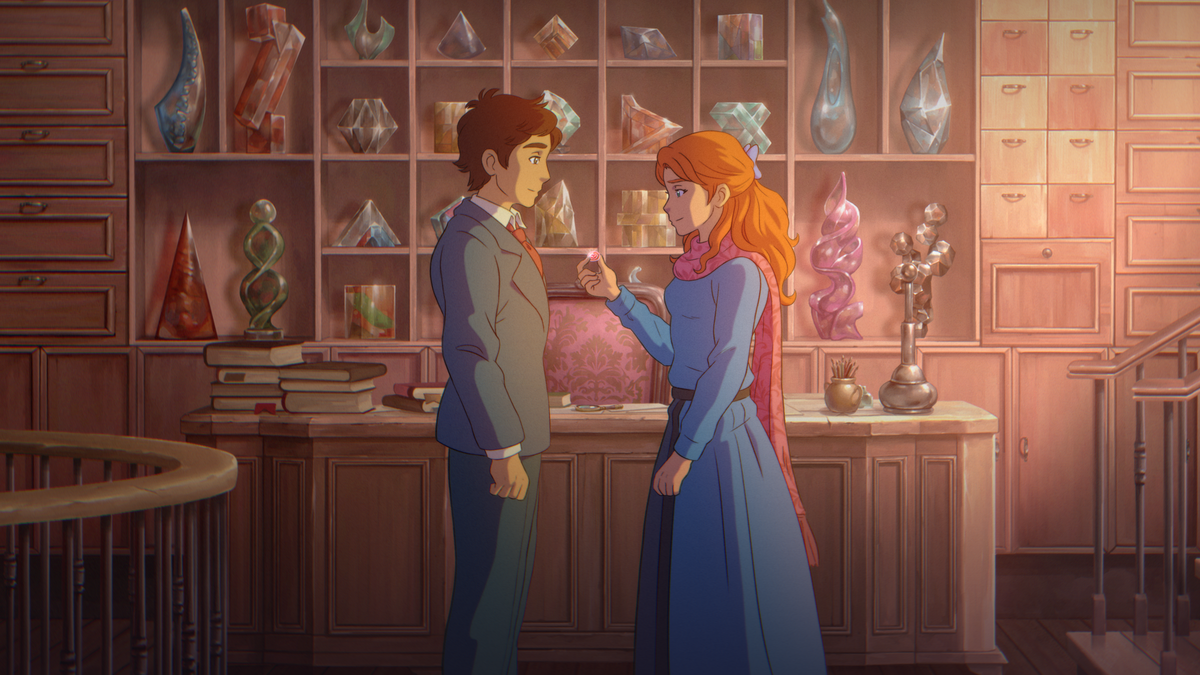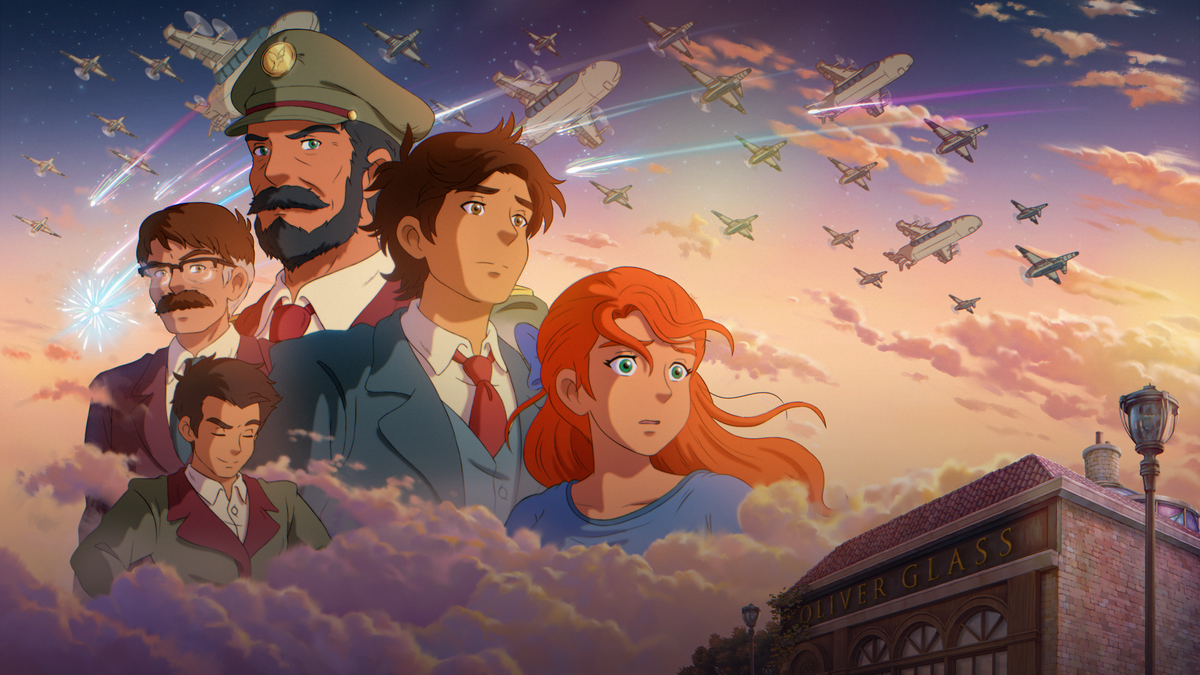Usman Riaz never set out to make history; he simply wanted to sketch. His venture began a decade ago, not with grandiose dreams but with a simple foundation — a moment of inspiration that set in motion a project of unprecedented scope for Pakistan. Now, a decade after that first sketch, he’s done more than just fill a few sketchbooks. He’s crafted Pakistan’s first hand-drawn animated feature film, The Glassworker, a stunning ode to the art that is drawing comparisons to Studio Ghibli’s finest.
Starting out as a musician, Usman had a childhood obsession with animated cinema. Little did he know that it was the very same fascination with these hand-drawn worlds that would eventually propel him to Annecy — his debut featurepremiering at the International Animation Film Festival this year, before charming Pakistani audiences back home with its theatrical release in July.
Set in a fantastical world that nonetheless feels grounded in reality, The Glassworker tells the story of Vincent, a young glassblower, and Alliz, a violinist, whose friendship is tested by the worlds they come from. The narrative, replete with tensions of nationalism, class struggles, and the pursuit of art in the face of adversity, rings sonorous with the challenges Usman faced growing up in post-9/11 Pakistan.
But The Glassworker is also a love letter — to the hand-drawn animations of yesteryears and to the masterful storytelling of seasoned anime legends. Having founded Pakistan’s first hand-drawn animation studio — Mano Animation Studios — Usman’s approach to his craft has been deeply personal and painstakingly meticulous. He has previously likened the film to a “moving painting,” speaking to the hand-drawn process that distinguishes it from computer-generated fare.
A still from ‘The Glassworker’
| Photo Credit:
Mano Animation Studio
Creating such a film in a country where the animation industry is still in its infancy was no small feat. With no government support and little infrastructure, Usman’s journey was a labor of love, and a bit of madness. After all, who else would spend ten years hand-drawing a feature film in a country almost entirely devoid of the craft?

Yet, despite the turbulence, Usman seems to have crafted something truly special. Here, we talk about his remarkable journey behind The Glassworker, exploring the triumphs and tribulations of putting Pakistan on the map and bringing his vision to life.
Excerpts from an interview:
Ten years ago, you began sketching what would become Pakistan’s first hand-drawn animated feature. Can you take us back to that moment? What was it about that initial sketch that made you believe it could evolve into something so historic?
Usman: I never set out to do anything historic. Initially, I just wanted to make a beautiful film like the ones my heroes made and that inspired me as a child. Over time, I realised no one had ever attempted to make a hand-drawn film like this in Pakistan. The historical significance hit me years into the process, but my goal remained the same: to create something that could move people.
You’ve previously described the film as a love letter to Studio Ghibli, and you’ve cited anime legends like Miyazaki, Shinkai, and Satoshi Kon as inspirations. How did you strike that balance between paying homage to your inspirations while creating something distinct?
Usman: I knew we could depict things in this animation style that hadn’t been seen before, especially within a Pakistani context. The character designs and the overall aesthetic leaned heavily into my inspirations, but it wasn’t just that. Of course, I wear my inspirations on my sleeve; I love Studio Ghibli, Hayao Miyazaki, Mamoru Hosoda, Satoshi Kon, and Makoto Shinkai.
Shinkai, in particular, has been a huge influence on me. I’ve been following his work since I saw Voices of a Distant Star, which blew my mind as a kid. His work is much more of a cerebral experience than just a typical mecha fight anime. I’ve been following his career closely, and I’m glad his work gained widespread recognition with Your Name. But for me, his early works like The Place Promised in Our Early Days and 5 Centimeters per Second were hugely influential.
Miyazaki’s The Wind Rises was the biggest inspiration for The Glassworker. His work transcends borders, and I wanted to stay true to what I enjoy watching. We put that into the film without trying too hard to make a statement about our influences. It was about expressing my love for these creators and contributing to the world of animated films.

From the early footage of the film, it seems to be set in a fantastical world while tackling very real and personal themes. How did your experiences growing up in Pakistan influence these themes?
Usman: The most impactful event in my childhood was 9/11. The world changed after that. There was always this underlying sense of anxiety and tension about what was happening in the world around us — especially in our region, with the tension between India and Pakistan and the broader conflicts involving America and the Middle East. It was troubling growing up, knowing that war could break out at any moment.

A still from ‘The Glassworker’
| Photo Credit:
Mano Animation Studio
As a child, you don’t fully understand these things; you just keep doing what you’re doing and find reasons to keep moving forward. But it does affect you. As I got older, I wanted to capture that feeling in this film — what it means to be a creative person, an artist, in tumultuous times. That’s primarily what The Glassworker is about. The messaging in the film is heavily anti-war. I believe war is not the answer to anything. Ultimately, it’s the people caught in the conflict who suffer, regardless of who the victor is. Capturing that sentiment was important to me, and I wanted to show the brutality of war. Having never experienced war myself but witnessing it around me, I felt compelled to comment on it.
Apart from the animation itself, it seems like the music also plays an integral part in the film. I’ve had the chance to listen to the album, and your work with Carmine DeFlorio is impressive. How did your background in music, particularly as a violinist, influence the composition of the score?
Usman: Because I’ve been drawing, painting, and writing music since I was young, the way I approached The Glassworker was a lot of fun. I would storyboard the movie, and then I’d get an idea for a musical motif or cue for a scene. My piano was right behind my sketching table, so I’d draw, then turn around and write something, then turn back and draw again. Sometimes, the music would guide the visuals rather than the other way around. It was an interesting experience, coming up with the narrative while drawing and writing simultaneously.
Music played a huge part in the creation process. The film is about art — Vincent is a glassblower, and Alize is a musician — so music is deeply intertwined with the story. Both characters are aspects of my personality, and exploring what it means to be both types of people in the setting of the film was fascinating.
It’s interesting how Miyazaki has influenced your craft in terms of visuals. Did Joe Hisaishi’s music also influence your creative process while writing the score?
Usman: Joe Hisaishi’s influence is present in my earlier work, but for The Glassworker, I aimed for something different. While we share a love for piano, I drew more from Philip Glass and classical Hollywood composers, particularly from the 1930s to 1950s. One of the biggest influences on the score and the story was Dr. Zhivago, especially Lara’s Theme.

‘The Glassworker’ has been a decade-long passion project. What were some of the biggest obstacles you faced in bringing this vision to life, and how did you keep pushing forward when the odds seemed stacked against you?
Usman: The hardest part was convincing people that this project was worth their time and money. My family and some investors from California helped finance the film, but keeping everyone motivated was challenging. My wife, Mariam, who is the co-founder of the studio, and my cousin, Khizer, the CEO, were a huge help, but the responsibility ultimately rested on my shoulders.
We had the usual movie-making headaches, but we also faced the added difficulty of making the film in Pakistan, where there’s no industry or infrastructure for hand-drawn animation. The animation culture here is more geared towards CG and video games, so doing something like this for the first time was challenging. We built the studio from scratch, trained the team, and launched a Kickstarter campaign to get things rolling. It took years of dedication, and by 2019, when we finally started making the movie, I had to find new strength to push forward. It was incredibly difficult, but we made it.

The film just screened at Annecy. What was the reception like? And are there any future festivals or events where you hope the film will be showcased?
Usman: Our world premiere at the Annecy International Animation Film Festival was a huge honour, especially since no Pakistani film had ever been part of the official competition. Annecy was amazing because it’s the most educated animation audience that will ever see the movie. Everyone in the audience was an animator or an artist who understood how much work went into creating it. I also just got back from the Hiroshima Animation Festival in Japan, where the film was again part of the official competition, and I got to show it to some of my heroes, which was amazing.
Are you in touch with the anime scene in Pakistan? In India, there’s been a marked increase in anime consumption and a very overt love for animation over the past decade. How do you see ‘The Glassworker’ influencing the future of animation and anime in Pakistan?
Usman: Honestly, I don’t see it changing the industry much because projects like this are difficult to execute. The main hurdle is financing. However, I hope the film inspires others to pursue their passions with dedication. There’s a great Walt Disney quote I like to paraphrase: “We don’t make movies to make money; we make money to make more movies.”
I just wanted to do good work, and if this allows me to make more, I’d love to do that. Right now, I’m exhausted. I was 23 when I started this; I’m 33 now. It’s been a very long journey, so I want to take it easy for a bit and focus on releasing the film in more territories. I have a lot of ideas I want to explore for future projects, and I hope I get the opportunity to do so.

Would you ever consider a cross-border collaboration with more South Asian voices to bring more South Asian stories to life?
Usman: Definitely, I’d love to. If an opportunity presents itself, that would be amazing. One thing that shocked me about the English trailer is that, when I checked the YouTube analytics, I found that most of the views — 1. 1 million so far — are from the United States. The second most views are from India, with Pakistan coming in third. The support this film has received from India has been humbling, and I would love to release the film there. I know the political situation between the two countries makes it difficult, but if there’s any way to release the film in India, if there’s a way to get the film to the people who want to see it, I’ll do whatever it takes.
Published – September 10, 2024 06:22 pm IST

